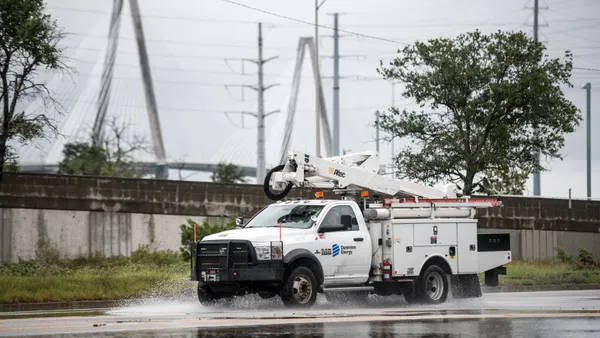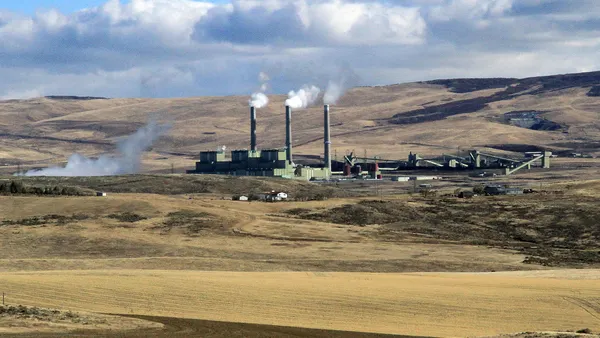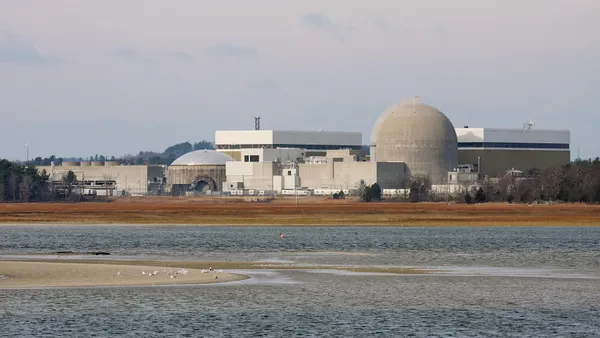Dive Brief:
- Duke Energy confirmed Saturday that it is responding to a coal ash spill at its retired H.F. Lee coal plant in Goldsboro, North Carolina, after flooding from Hurricane Matthew.
- The company said in a press release that state investigators determined the amount of material released was not large enough to fill the bed of an average pickup truck and that surrounding water quality was not affected.
- Environmental groups, such as the Waterkeeper Alliance and the Neuse Riverkeeper, in a statement insist that the coal ash breach is an example of Duke negligently placing ash in "rickety dams on the banks of flood-prone rivers all across the state."
Dive Insight:
According to Duke, the coal ash leaked from an inactive basin, decommissioned in the 1980s. Now covered with vegetation and soil, the flooding displaced some ash onto a road surrounding the disposal area, but the extent of damage will not be known until flood waters recede completely.
"State inspections today also determined that the active coal ash basin continues to perform well as flood waters recede," the utility said in a release. "In recent months, the company made enhancements to the structure, including a covering of rip rap (rocks)."
Danielle Peoples, a spokesperson for Duke Energy stationed at the site, told Utility Dive that while flooding still persists, it's difficult for the utility to properly assess its inactive basins.
"There's still a lot of flooding in the area ... and as the water recedes we can see more," she said. "We continue to do daily inspections and share any findings with the state ... as we continue to monitor we are not seeing any additional issues."
Waterkeeper Alliance and Neuse Riverkeeper wrote in a joint statement, however, that Duke Energy's dam infrastructure is not sufficient to manage the potential for flooding.
“This failure likely happened because the river has begun to recede, which is when structural problems often develop. Like so many of Duke Energy’s coal ash ponds across the state, the cooling pond at Lee has a long history of structural problems – these are disasters waiting to happen."
Peoples, though, says that the dams are sound and performing well.
"They have to meet state and federal requirements, and we have to report on those requirements. If someone really wanted to dig into the engineering details, it's all publicly available ... we have to meet the safety requirements," she said.
Duke Energy has continued to be subject scrutiny by environmental groups and the media since its 2014 Dan River spill, which involved of 30,000 tons of sludge that spilled after a pipe burst at another Duke plant.
Duke is now spending $6 million dollars in fines as a consequence. The breach once again resulted in environmental groups turning a critical eye toward the utility, which will be submitting it's compliance plans for the EPA's 2014 CCR rule for coal ash management this month.
Duke is scheduled to excavate the coal ash at the Lee plant by 2028 due to flooding risks. North Carolina is one of the few states with laws governing coal ash disposal, put in place after Duke's Dan River spill.
This post has been updated to remove references to a breach in a dam holding cooling water for a nearby Duke natural gas plant and correct the amount of the fine. That breach was unrelated to the coal ash spill, according to Duke. Duke also must pay a $6 million fine, not upwards of $6 million.













